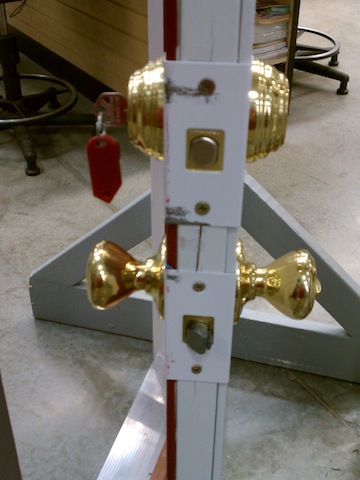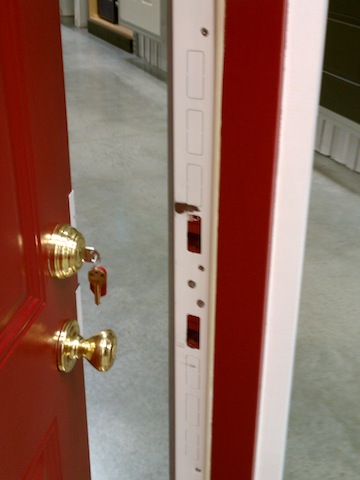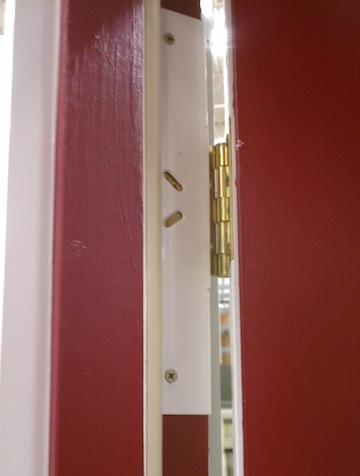Jason Dauta from St. Petersburg (FL) sent in these photos of a door-hardening product that is available at most home improvement stores. The product is a simple set of stamped steel plates secured with long screws. The kit involves three main components: door shields, jamb shields, and hinge shields. Each of these components is intended to help prevent the wood from splitting in the area of the door and jamb it is protecting. These devices are cheap (less than $75 for the set) and easy to install, so they may become more commonly found. These shields will keep the wood of the jamb from splitting from a kick-in style of forcible entry, but will pose minimal problems to a well-placed set of irons. The wood jamb, and wood door will still crush and deform as expected during the force. Simply Identify and Visualize, and these doors shields will be of little consequence.
The photo below shows the door shield installed. It goes over the latch faceplate and is also attached with long screws. Notice in the picture that the door is actually already split due to poor installation of the device.

The photo below shows the jamb shield installed. It replaces the normal strike plate and is attached with longer screws. It disperses the force and is intended to be more difficult to defeat than a traditional strike plate.

The photo below shows the hinge shield installed, it goes over the existing hinges.


“These shields will keep the wood of the jamb from splitting from a kick-in style of forcible entry…”
Wonder how it hold up against the Donkey Kick.
Mule, Donkey, flying dutchman kick, whatever… More than anything those kits are to reinforce an already damaged door from previous entry… Usually the “flavor and taste” of the house will let you know if those kits may be installed, plus they’re easy to see. These door reinforcements are smaller than what Lowes/Home Depo typically offer, but still would be visible under good conditions and offer tactile response under smoke conditions.
Doesn’t look like these would prevent anyone from pulling the lock cylinder and tripping the lock with a tool.
Pssst…
The two holes (oblong) over the hinge itself are not for decoration; you are supposed to remove the screws from the hinge and screw through the reinforcement with the provided 3″ screws. Also, if you have security hinges, you will need to modify the plate (drill a hole) to allow for the security protrusion / pin / etc. to make proper contact.